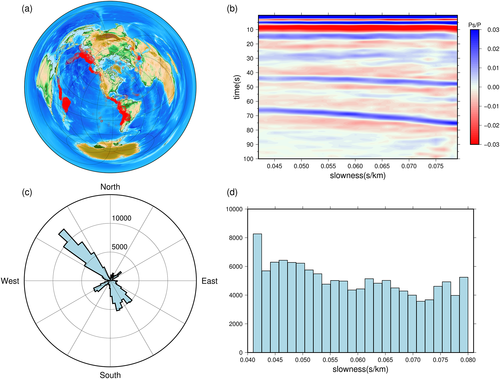Method delves under Earth's mantle for more detailed look
 The Earth is composed of four layers: the cool,
The Earth is composed of four layers: the cool,
In his paper Application of Ps Scattering Kernels to Imaging the Mantle Transition Zone With Receiver Functions published recently in the Journal of Geophysical Research: Solid Earth, University of New Mexico Ph.D. student Han Zhang researched a method called Ps Scattering Kernels to create an image of the layer we can’t see in finer detail than previous studies.
At 255 to 400 miles below the Earth’s crust, the transition zone can’t be studied firsthand. Human researchers must turn to science to figure out what’s going on underneath and how it affects the surface we live on.
“The importance of getting a nicer picture of this interesting layer is to improve our understanding of the composition of the Earth and convection, or movement, patterns of the whole mantle,” Zhang explained, noting that the transition zone contains minerals such as olivine, garnet, and possibly large amounts of water in the form of hydroxide crystals. Hydroxide and water can rise to the upper mantle, crust, and even atmosphere through mantle convection, volcanic eruptions, and rifts in the
Zhang and his colleagues Dr. Brandon Schmandt, associate professor at the UNM Earth and Planetary Sciences department, and Dr. Steve Hansen, formerly of the UNM EPS and now at Macquarie University in Australia, used computational systems at the UNM Center for Advanced Research Computing to model data from the nationwide geophysical project called USArray. They then compare the simulated models to actual surface activity.
In the future, he added, the team plans to use seismic data from Mount St. Helens in Washington, known for its 1980 eruption, the deadliest volcanic event in U.S. history.
Zhang hopes the research will eventually provide other
“The Earth is interesting to me for sure. A good thing in doing geoscience is that we can always get the chance to go outside and see how amazing and beautiful our planet can be. This research is just one small step toward improving the understanding of the solid Earth system,” Zhang said.
He urged other researchers to look into geophysics, noting, “Geophysics is an interesting field and the community is very friendly. For instance, almost all the data is available to the public so the freedom of choosing your project is high.”
Funding for this project was from NSF EAR 1554908 and the Caswell Silver Fellowship of EPS and is much appreciated, he said.
